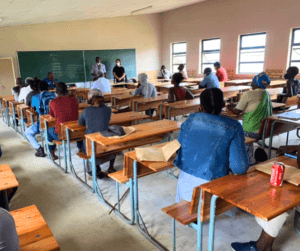In the name of conservation, human and customary tenure rights are violated
In South Africa, and other regions of the Global South, biodiversity conservation has long been intimately intertwined with colonialism and racial segregation. Indigenous communities have been stripped of their ancestral land and their access to natural resources in the name of creating fortresses of nature. The rationale behind such displacement is that human beings constitute the foremost threat to conservation. The end of apartheid did not entirely halt these conservation practices either. Rather, over the past three decades, an imperative discourse has taken hold of global sustainability and conservation, which then leads to new forms of neocolonialism, such as green grabbing and the commodification of nature. Acts of physical violence have even been committed in the name of conservation. Members of fishing communities in South Africa claim that they have been attacked for seeking access to their livelihoods. Their food sovereignty is at risk, as well as their culture and customary systems.
Fisher communities suffer violence inside World Heritage Site
The night of 16 September 2020, Celimpilo Mdluli and two of his friends from the Nibela community were fishing at Lake St Lucia, part of the iSimangaliso Wetland Park (IWP) in South Africa, when a group of wildlife rangers allegedly attacked them and shot Celimpilo Mdluli to death. The other two fishermen managed to escape, one of them sustaining a gunshot in his thigh. Fourteen months later, on 12 November 2021, with the investigation of Celimpilo’s death still pending and his family still grieving, his brother, Thulani Mdluli, was allegedly killed by rangers when he was setting up a net on the shore of the same lake. When members of the Nibela community gathered at the scene to find out what had happened, they were unable to locate his body. Celimpilo’s brother remains missing to date.
The Nibela community is an Indigenous fishing community descendant of the Thonga people, a Bantu ethnic group from Maputaland, the territory along the border between South Africa and Mozambique. They settled on the Nibela peninsula adjacent to Lake St. Lucia before the area was colonized. For centuries, their livelihood has centered around fishing: using traditional nets, fish traps, and boats made from natural materials they find around the lake such as twine. It was not until the 1990s that they started using new techniques such as nylon gillnetting, which was encouraged by conservation authorities. Throughout their history, the community has developed their culture and customary laws in relation to the lake and their ancestral land based on a sustainable community management system of access and use of natural resources such as trees, reeds, and water.
But with the advent of colonialism, everything changed. South African authorities gradually converted the coastal area between Lake St Lucia and Kosi Bay into a protected area by forcibly removing traditional communities from their land. The initial reserve, which was much smaller than its present size, was established in 1895 after a drastic drop in the wild elephant population due to professional hunting. It became the first conservation area in South Africa. During apartheid, sections of what is today the iSimangaliso Wetland Park, such as Lake St. Lucia, Kosi Bay, and False Bay, were declared protected areas, each with its own management policy.
In 1979, Maputaland (on the northern end of the park) and St. Lucia (in the south) were converted into Marine Protected Areas, thus fishing and harvesting became strictly controlled or, in some areas, prohibited entirely. In 1986, St. Lucia Lake was proclaimed a Ramsar site to protect its wetlands; and in 1990, a larger area became the Greater St. Lucia Park. In 1999, after being successfully saved from dune mining, the park was recognized as a World Heritage Site by UNESCO. Thus, the 13 separate but contiguous conservation areas were combined under a unified management system, and human activities were restricted to a third of the total area and became strictly controlled and monitored. In 2007 it was renamed to iSimangaliso Wetland Park, and in 2019 the park was further expanded. It now comprises 9% of the entire South African coastline and is the country’s second-largest conservation area.
With the advent of colonialism, white authorities gradually converted parts of the South African coast into protected areas by forcibly removing traditional communities from their land.

Source: iSimangaliso Wetland Park

